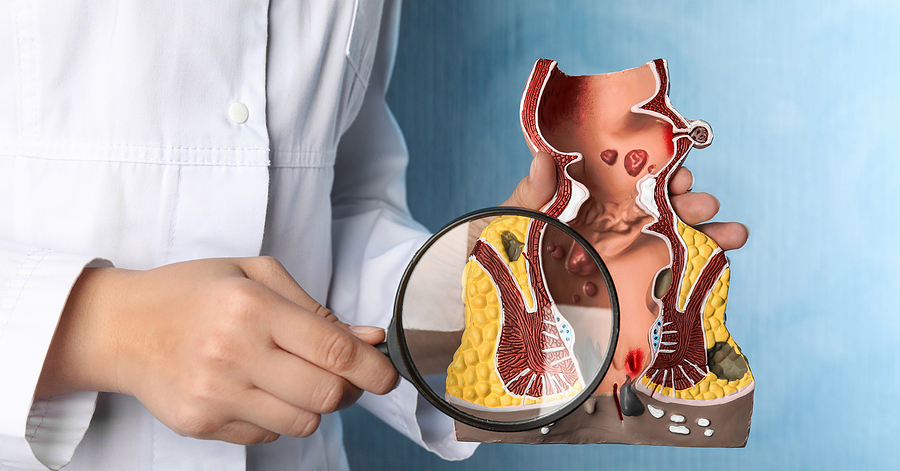Perianal Fistula: Causes, Symptoms & Treatment
A perianal fistula is an abnormal communication channel that develops between the inside of the anus and the outer skin around the anus. The anus is the muscular opening at the end of the digestive tract where feces leave the body. Most perianal fistulas are the result of an infection that starts in an anal gland. Inside the anus, there are a number of small glands that produce mucus, known as anal glands. Sometimes, these glands can become blocked and infected after exposure to fecal bacteria, leading to a pus-filled abscess that drains spontaneously or surgically through the skin next to the anus.

Anal Fistula Causes
The most common cause of a perianal fistula is an infection that starts in an anal gland, which causes an abscess to form. The appearance of an abscess is the acute form of the infection, while the development of a fistula is related to the chronic form of the condition. However, in some cases a perianal fistula may not be associated with the development of an abscess.
Less common causes of perianal fistulas include long-term inflammatory bowel disease, such as Crohn’s disease or diverticulitis. Some sexually transmitted diseases, such as syphilis, chlamydia or HIV infection, but also some infections, such as actinomycosis and tuberculosis can lead to the development of anal fistula. Treatment with immunosuppressants, any trauma to the area or anal fissure, or radiation to treat rectal cancer can contribute to the development of this condition.
Perianal Fistula Symptoms
Symptoms of a perianal fistula may include signs of inflammation such as irritation, redness, swelling, warmth of the skin around the anus, and pain that lasts for a short time. These symptoms may extend to other areas such as the thighs, buttocks and scrotum. At the same time, the patient may notice drainage of pus accompanied by an unpleasant odor, while in some cases difficulty in controlling bowel movements (bowel incontinence) may occur. However, this condition may not show symptoms, but the patient may be aware of it due to the presence of inflammation at the external opening of the fistula, discomfort and itching, discharge of purulent fluid and partial incontinence that may occur.
Anal Fistula Diagnosis
Diagnosing the condition requires taking a careful history of the patient’s symptoms and past medical history, followed by a physical examination. During the physical examination, the area around the anus is thoroughly examined to find the path of the fistula in the skin. Imaging tests may be used to help with the diagnosis, such as an intra-anal ultrasound or magnetic resonance imaging (MRI) to better visualize the fistula passage.
Perianal Fistula Treatment
A perianal fistula will not heal without treatment and there are a number of different treatment options available. If there is a perianal abscess, then it is opened and drained and the abscess cavity cleaned. Antibiotic treatment is then administered and thorough hygiene of the area is recommended.
Perianal fistulas often require surgery as they are unlikely to heal automatically. The main treatment options include
- Seton placement, in which a surgical thread is placed through the fistula passage and tied to form a continuous ring between the internal and external openings of the fistula. The thread is left in there for several weeks to allow drainage and prevent infection and thus help the fistula to heal.
- Fistulotomy. This procedure involves making an incision along the length of the fistula, which is then left open to heal. However, this particular procedure may be accompanied by fecal incontinence, a reduced success rate and severe post-operative pain.
- Fistulectomy, in which the entire fistula tract is removed, which may also cause significant postoperative complications.
- Fibrin glue application. This material is injected into the fistula duct, causing a clot to form and thus healthy tissue within the fistula to close it.
The most modern methods of treating a perianal fistula include laser therapy and the FIXcision technique. Laser therapy is performed by inserting a laser fiber into the anus that delivers heat energy into the fistula. Through this specific procedure, photothermal destruction of the fistulous duct is caused, accelerating its healing. This particular method is bloodless, painless, while at the same time minimizing the possibility of future recurrence and the appearance of incontinence, as it keeps the anal sphincter intact.
The FIXcision technique is a revolutionary method of treating anal fistulas, as the special tools with which the procedure is performed allow the removal of the peripheral tissue of the fistula to treat it. This technique is carried out in three steps. First, the path of the fistula is found, followed by compression of the affected tissue with the introduction of a special guide tool, while finally a controlled removal of the epithelial tissue is carried out along the entire extent of the perianal fistula using a circular blade, minimizing the trauma tissue in the sphincter muscle. This technique is bloodless and painless, with excellent success rates.

